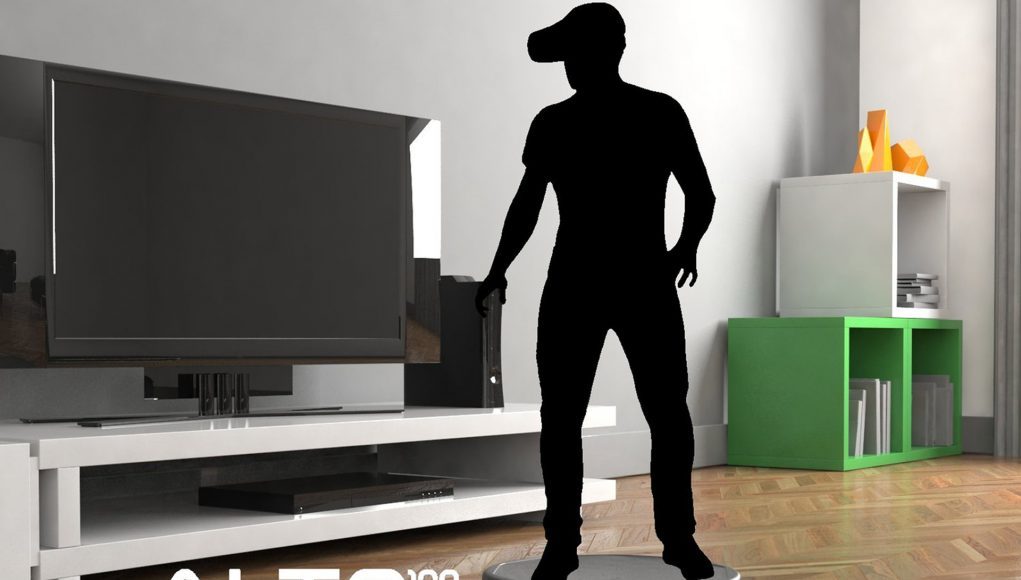Visospace, a Sydney, Australia-based team of engineers, recently launched their standing VR motion controller platform Alto100 crowdfunding campaign on Indiegogo in effort to tempt developers, beta testers, and early adopters to a unique style of locomoting through VR games and experiences.
Omnidirectional treadmills work with varying success, and are usually too large and expensive for typical consumers, making such a relatively compact motion controller, that lets you stand up and lean to move though VR environments, an intriguing offer.
The Alto100 Indiegogo campaign has a crowdfunding goal of $10,000 AUD (~$7,500), and is selling the Alto dev kit for $790 AUD (~$590 USD) a piece. Much like Kickstarter, the Indiegogo campaign has a fixed goal, so the developers will only receive funds once they hit $10,000 AUD mark. At the time of this writing, Alto100 is more than half-way there with only a little over two weeks to go.

Visospace is limiting the number of dev kits produced to only 100, a modest number for a new peripheral, although the company intends on releasing a second campaign later in the year with its sights set on consumers and location-based/enterprise customers.
Although still uncertain, much like the seated motion controller platform 3dRudder, which launched back in early 2016, Alto appears to incorporate an IMU sensor to tell which direction the user is leaning, and translating that into directional button presses.
The dev kit includes the AA battery-operated motion controller itself, which has both cabled for PC/Console-driven VR headset and the option to connect via Bluetooth for wireless mobile VR headsets. The package also includes a USB cable, SDK, and game demos.
You can follow along with the Indiegogo campaign here.







